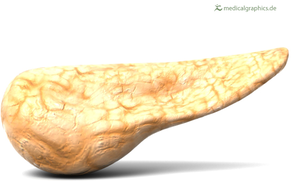Difference between revisions of "Pancreas"
| Line 36: | Line 36: | ||
:[https://www.amazon.co.uk/gp/product/1782948120/ref=as_li_tl?ie=UTF8&camp=1634&creative=6738&creativeASIN=1782948120&linkCode=as2&tag=nrjc-21&linkId=dedef775c6a43dbb0a609441525adac0 ''Pancreas, pages 224, 238, 239, GCSE Biology, CGP, Edexcel ''] | :[https://www.amazon.co.uk/gp/product/1782948120/ref=as_li_tl?ie=UTF8&camp=1634&creative=6738&creativeASIN=1782948120&linkCode=as2&tag=nrjc-21&linkId=dedef775c6a43dbb0a609441525adac0 ''Pancreas, pages 224, 238, 239, GCSE Biology, CGP, Edexcel ''] | ||
:[https://www.amazon.co.uk/gp/product/1782946748/ref=as_li_tl?ie=UTF8&camp=1634&creative=6738&creativeASIN=1782946748&linkCode=as2&tag=nrjc-21&linkId=a4f0348fc37d0ba1bb52d27f8679581f ''Pancreas, pages 77, 81, GCSE Biology; The Revision Guide, CGP, Edexcel ''] | :[https://www.amazon.co.uk/gp/product/1782946748/ref=as_li_tl?ie=UTF8&camp=1634&creative=6738&creativeASIN=1782946748&linkCode=as2&tag=nrjc-21&linkId=a4f0348fc37d0ba1bb52d27f8679581f ''Pancreas, pages 77, 81, GCSE Biology; The Revision Guide, CGP, Edexcel ''] | ||
| + | |||
| + | ====OCR==== | ||
| + | :[https://www.amazon.co.uk/gp/product/1782945695/ref=as_li_tl?ie=UTF8&camp=1634&creative=6738&creativeASIN=1782945695&linkCode=as2&tag=nrjc-21&linkId=ceafcc80bcad6b6754ee97a0c7ceea53 ''Pancreas, pages 37, 40, Gateway GCSE Combined Science; The Revision Guide, CGP, OCR ''] | ||
Latest revision as of 15:07, 17 December 2019
Contents
Key Stage 4
Meaning

A computer generated image of a pancreas.
The pancreas is an organ in the Digestive System and an endocrine gland.
The Pancreas and Digestion
- The pancreas produces digestive enzymes including pancreatic amylase, trypsin (which is a type of protease and lipase.
- The digestive enzymes are passed down the pancreatic duct which joins with the bile duct before arriving in the Small Intestine.
The Pancreas as an Endocrine Gland
- The pancreas secretes the hormones insulin and glucagon to regulate blood glucose levels.
- When the blood glucose level is too high the pancreas produces insulin to reduce the blood glucose level.
- When the blood glucose level is too low the pancreas produces glucagon to increase the blood glucose level.
- The liver is a target organ for the hormone glucagon and insulin.
- In Type 1 Diabetes the pancreas is damaged and cannot produce insulin to regulate blood glucose levels.
- In Type 2 Diabetes the pancreas may be overworked having to produce much more insulin than it would in a healthy animal.
Extra Information
References
AQA
- Pancreas, page 36, 38, 49, 161-165, GCSE Biology; Third Edition, Oxford University Press, AQA
- Pancreas, pages 100, 103, 191, 192, GCSE Biology; Student Book, Collins, AQA
- Pancreas, pages 12, 13, 14, GCSE Combined Science Trilogy 2, Hodder, AQA
- Pancreas, pages 31, 73, 74, GCSE Biology; The Revision Guide, CGP, AQA
- Pancreas, pages 45, 47, GCSE Combined Science Trilogy 1, Hodder, AQA
- Pancreas, pages 61, 62, GCSE Combined Science; The Revision Guide, CGP, AQA
- Pancreas, pages 67, 181, 184, GCSE Combined Science Trilogy; Biology, CGP, AQA
- Pancreas, pages 73, 207, 210, GCSE Biology, CGP, AQA
Edexcel
- Pancreas, page 142, GCSE Biology, Pearson, Edexcel
- Pancreas, pages 224, 238, 239, GCSE Biology, CGP, Edexcel
- Pancreas, pages 77, 81, GCSE Biology; The Revision Guide, CGP, Edexcel